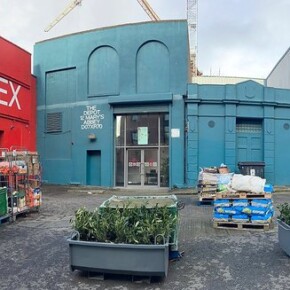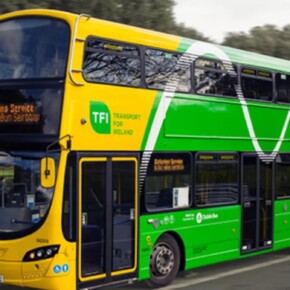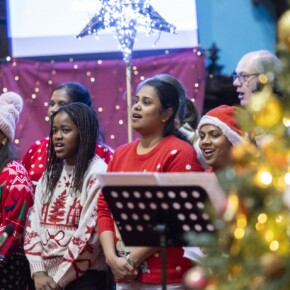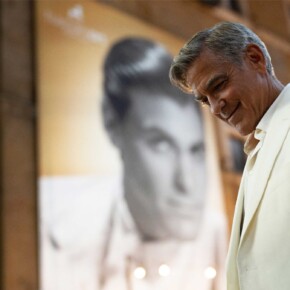Famous Five Go Again in Dublin South-West
Mike Finnerty 20 Nov 2024
2020’s general election in Dublin South-West saw Seán Crowe receive over 20,000 first preferences, or just shy of 30% of the vote.
When the most-election milieu faded, the constituency was identified as one of the constituencies where Sinn Féin left a Dáil seat after them; had they run an extra candidate they would have been in contention to pick up an extra seat.
The party has made sure the same thing won’t happen on November 29; while the polls may not support it, Sinn Féin are prepared for that eventuality by running councillor Niamh Whelan alongside Crowe.
If Sinn Féin want to form a government, winning two seats here should be top of their to-do list.
It won’t be easy however; to their left, People Before Profit’s Paul Murphy, who was the major beneficiary of Sinn Féin transfers in 2020, has since become one of the party’s most prominent critics.
November 29 will reveal just exactly how much of Crowe’s 20000 votes back in 2020 were personal votes and how many were for Sinn Féin.
Murphy is in a similar situation, and has the added benefit of growing his reputation since 2020.
After being elected with 6.6% of the vote in 2020, Murphy has every reason to believe he will increase his share of the vote this time out.
Murphy has been open about wanting to expand his influence on the left, reaching out (in vain) to get Sinn Féin and other parties of the left to work with People Before Profit.
This outreach should be enough to keep him competitive.
One candidate who is in real danger of losing his seat is Green TD Noel Francis Duffy.
Local results for the Greens were nothing short of shambolic back in June.
The party was totally wiped out on South Dublin County Council; in Tallaght South, the party received just 1.1% of first preferences and didn’t fare much better in Tallaght Central with 2% of the vote.
Those losses in Tallaght should send alarm bells ringing in HQ, as they won a seat in Tallaght Central in 2019 and were fairly competitive in Tallaght South in the same year.
Duffy’s old council seat of Firhouse–Bohernabreena also saw the Green vote drop from 16.3% during 2019’s Green Wave to 5.3% in June.
The Greens’ polling in Dublin hasn’t really hit the heights they saw in 2020 and this has provided a golden opportunity for Labour to pick up a seat.
Ciarán Ahern, who ran in the seat in 2020, is maybe Labour’s best chance of winning a new Dáil seat in the Southside.
Ahern picked up 5.3% in the vote in the 2020 general but won re-election in Rathfarnham–Templeogue in June alongside running mate Pamela Kearns.
June’s local election results, and subsequent general election polling, show that Labour are on track to swap out the Greens for the middle-class progressive vote; if Ahern wins a seat here for Labour it would rubber stamp that belief.
From the government parties, Seán Lahart of Fianna Fáil and Fine Gael’s Colm Brophy are standing for re-election.
Both TDs were elected in 2016 and Brophy has the edge over Lahart.
Both parties have opted to bring in running mates for the incumbent TDs – Teresa Costello is running alongside Lahart and Sarah Barnes is running alongside Brophy – but there is little to indicate either party having the ability to win two seats here.
Fine Gael performed better than Fianna Fáil here in June, with the Pereppaddan family winning seats in both Tallaght constituencies while Fianna Fáil could not.
The wildcard in the race is independent Paddy Holohan going for a Dáil seat.
Holohan was famously elected to both Tallaght constituencies back in June which speaks to his large following in the area.
Granted, Tallaght South had the worst turnout anywhere in Dublin with just 31.5%, but that was enough for him to top the poll there with 21.8% of the vote (or 1,643 first preferences in that part of Tallaght.)
In Tallaght Central, he secured 7.7% of the vote, or 967 first preferences (which ended up at 1,933 votes overall after transfers).
Having over 3,000 preferences in Tallaght alone puts Holohan in contention for the final seat.
Of course, a lot would need to go right over the course of the campaign for Holohan to win a Dáil seat but Holohan has the potential to act as a spoiler for Sinn Féin.
Dissatisfaction with government parties runs high in this part of Dublin; to that end, independent councillor Alan Edge might also emerge as a dark horse for the final seat.
Edge was elected on the first count alongside Fine Gael’s Brian Lawlor and Fianna Fáil’s Emma Murphy back in June in Firhouse–Bohernabreena.
All three were elected on the first count, with Edge scoring best with 23.4% of first preferences (for those playing along at home, Lawlor received 20.8% and Murphy received 16.9%.)
With polling for independent candidates polling in double digits across Dublin, Edge is in with a strong chance of being one of the independents who turns local success into a Dáil sat on November 29.
Should either candidate get above 6 or 7% of first preferences on election day that could be enough to put them in the running for the final seat.
Paul Murphy winning a Dáil seat with 6.6% of first preferences in 2020 shows it can be done.
In the event neither Holohan or Edge make it to the final rounds, their transfers will prove crucial in determining the shape of the race.
Making an educated guess, Crowe is likely to top the poll in 2024 but with a reduced majority compared to 2020.
Where that reduced majority goes will be absolutely crucial in the DNA of the race.
It’s entirely possible some of Crowe’s supporters from 2020 have gone to Murphy, Holohan, Edge or even Lahart/Brophy.
The Social Democrats picked up 4.1% back in 2020, and have since picked up two councillors on South Dublin County Council.
Justin Sinnott’s win in Rathfarnham–Templeogue came at the expense of two Sinn Féin candidates in the area, the same area where Labour got two councillors elected.
Recent weeks have shown that Sinn Féin lost a good chunk of voters to parties on the centre-left, and while we predicted Ahern is in with a good shout of winning a Dáil seat for Labour here it would be unwise to count out Ross Mullane of the Social Democrats.
As we’ve stated, there are candidates who are running because of their personal vote and candidates running who want to tie themselves to the brand; Ross O’Mullane is that kind of candidate for the Sockies.
With four of the five seats up for grabs here essentially sewn up the big question is who will win the final seat?
All signs point to betting on red.











